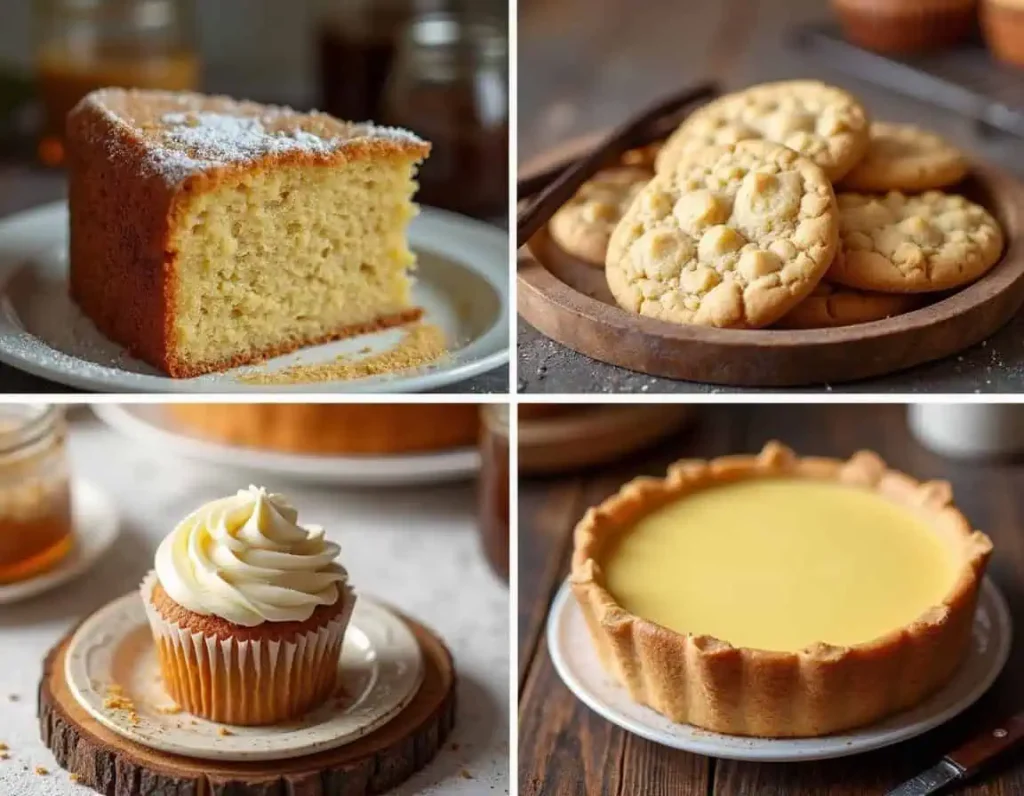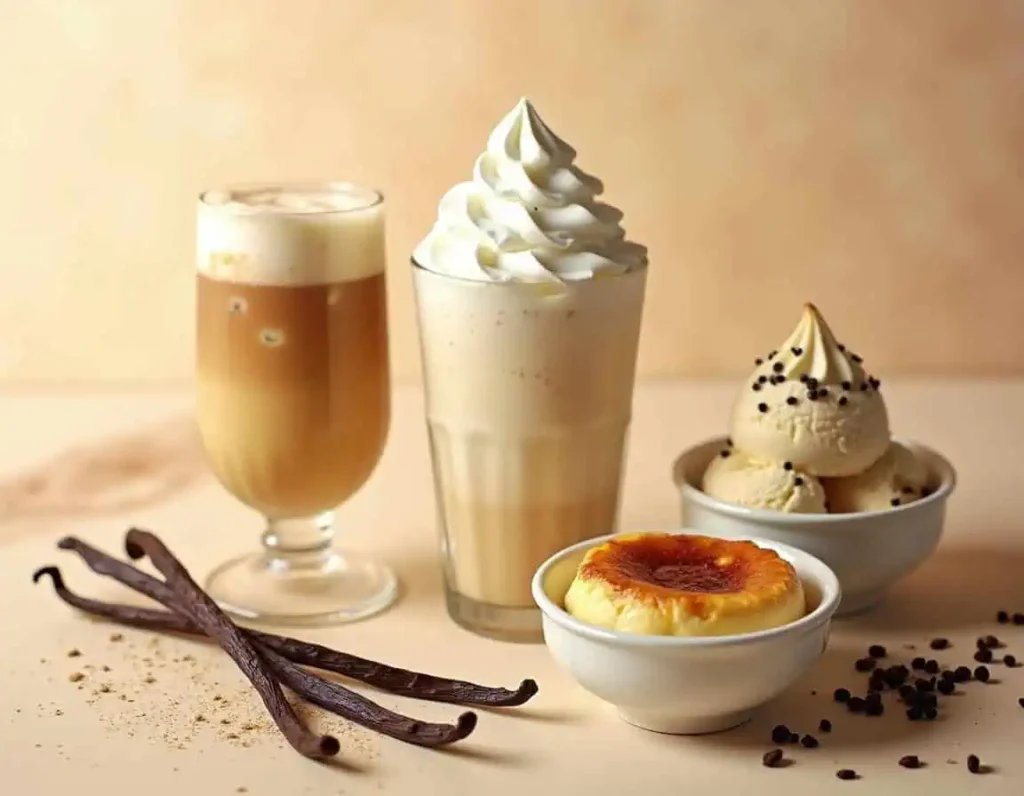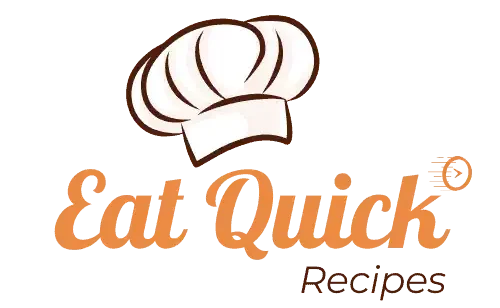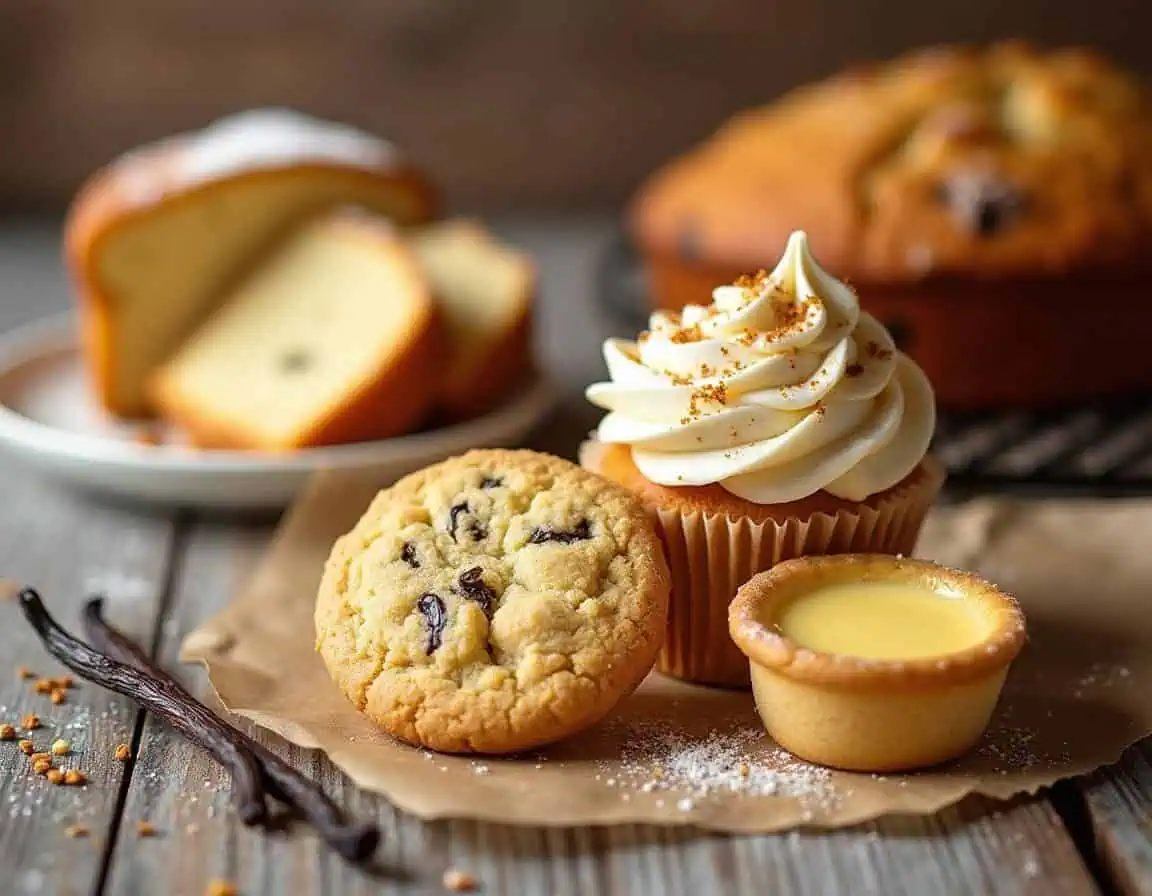Vanilla bean paste is a versatile and flavorful ingredient that has become a favorite among home bakers and professional chefs alike. If you’ve ever wondered, “What do you use vanilla bean paste for?”, you’re in the right place. This article will explore the many uses of this aromatic ingredient, how it compares to other vanilla products, and why it’s worth keeping in your pantry.
Whether you’re making desserts, beverages, or savory dishes, it can elevate your recipes with its rich, authentic flavor. Let’s dive into everything you need to know about this culinary gem.
What Is Vanilla Bean Paste?
Vanilla bean paste is a concentrated form of vanilla made by combining vanilla bean seeds, vanilla extract, and a thickening agent like sugar or gum. It has a syrup-like consistency and contains the tiny black specks of real vanilla beans, giving your dishes a gourmet touch.
Key Features:
- Rich flavor: It delivers a more intense flavor than vanilla extract.
- Convenience: Easier to use than scraping vanilla beans.
- Visual appeal: Adds the signature black specks of vanilla to your recipes.
A Brief History of Vanilla and Its Paste
Vanilla has a fascinating history that dates back to ancient civilizations. The Totonac people of Mexico first cultivated vanilla and considered it a sacred plant. Later, the Aztecs adopted vanilla and used it to flavor their chocolate drinks. Spanish explorers introduced vanilla to Europe in the 16th century, where it quickly became a prized ingredient.
Vanilla bean paste, however, is a modern invention. Manufacturers developed it as a convenient alternative to whole vanilla beans, offering the same rich flavor and visual appeal without the hassle of scraping seeds. Today, bakers and chefs around the world rely on it for its versatility and ease of use.
How Is Vanilla Bean Paste Made?
The production of vanilla bean paste involves a meticulous process to ensure the final result is both flavorful and visually appealing. Here’s a step-by-step breakdown:
- Harvesting Vanilla Beans: Farmers hand-harvest vanilla beans from the vanilla orchid, a labor-intensive process that contributes to their high cost.
- Curing and Drying: The beans are cured and dried over several months to develop their signature flavor and aroma.
- Extraction: Seeds (or caviar) are scraped from the beans and combined with vanilla extract to create a concentrated flavor base.
- Thickening: A thickening agent, such as sugar syrup or gum, is added to create the paste’s syrupy consistency.
- Packaging: The final product is packaged in jars or tubes, ready for use in kitchens around the world.
This process preserves the natural flavor compounds of vanilla while making it more convenient to use than whole beans.
Why Choose Vanilla Bean Paste Over Other Vanilla Products?
When comparing vanilla bean paste to vanilla extract or whole vanilla beans, each has its unique advantages. Here’s why you might choose the paste:
- Flavor intensity: It delivers a more concentrated flavor than extract, so you need less.
- Cost-effective: Less expensive than whole vanilla beans but offers a similar flavor profile.
- Ease of use: No need to scrape beans; simply measure and add.
- Aesthetic appeal: Adds visible vanilla specks, enhancing the presentation of desserts.
How Does It Compare to Vanilla Powder?
Vanilla powder is another alternative to vanilla extract and beans. Manufacturers create it by grinding dried vanilla beans into a fine powder or mixing vanilla extract with a carrier like maltodextrin. While vanilla powder works well for dry recipes like cookies or rubs, it lacks the visual appeal and syrupy texture of vanilla bean paste. The paste works better in recipes where both flavor and appearance matter.
The Science Behind Vanilla Bean Paste
Vanilla’s flavor comes from a compound called vanillin, which exists in the beans of the vanilla orchid. However, the complexity of vanilla’s taste goes beyond vanillin. Vanilla beans contain over 200 flavor compounds, which give them their unique depth and richness.
When manufacturers create vanilla bean paste, they extract and concentrate these compounds, resulting in a product that delivers a more robust flavor than vanilla extract. The addition of real vanilla seeds enhances both the taste and the visual appeal, making it a favorite for bakers and chefs.

How to Use Vanilla Bean Paste in Your Recipes
Vanilla bean paste is incredibly versatile and works well in a wide range of recipes. Below are some of the most popular ways to incorporate it into your cooking and baking.
1. Baking Desserts
Vanilla bean paste is a baker’s best friend. Use it in:
- Cakes and cupcakes: Add depth to vanilla sponge cakes or buttercream frosting.
- Cookies: Enhance the flavor of classic sugar cookies or chocolate chip cookies.
- Pastries: Perfect for eclairs, cream puffs, and Danish pastries.
- Pies and tarts: Add a gourmet touch to custard pies or fruit tarts.
Pro Tip:
When using vanilla bean paste in baked goods, mix it with wet ingredients to ensure even distribution of the vanilla specks.
2. Making Ice Cream and Custards
The rich flavor and speckled appearance of vanilla bean paste make it ideal for:
- Homemade ice cream: Create a creamy vanilla base with visible bean specks.
- Custards and puddings: Elevate crème brûlée, flan, or rice pudding.
- Pastry cream: Use it in fillings for éclairs, tarts, or layered cakes.
Recipe Idea: Vanilla Bean Crème Brûlée
Combine heavy cream, egg yolks, sugar, and vanilla bean paste to create a silky custard. Top with caramelized sugar for a restaurant-quality dessert.
3. Flavoring Beverages
Vanilla bean paste can transform your drinks into something extraordinary:
- Coffee and lattes: Stir a small amount into your morning brew.
- Milkshakes and smoothies: Add a burst of vanilla flavor.
- Cocktails: Use it in vanilla martinis or spiked eggnog.
- Hot chocolate: Enhance the richness of your cocoa.
Pro Tip:
For a luxurious vanilla latte, mix 1 teaspoon of vanilla bean paste with steamed milk and espresso. Top with whipped cream for an indulgent treat.
4. Savory Dishes
While it’s primarily used in sweet recipes, vanilla bean paste can also shine in savory dishes:
- Marinades and glazes: Pair it with seafood, chicken, or pork.
- Salad dressings: Add a hint of sweetness to vinaigrettes.
- Sauces: Use it in creamy sauces for a unique flavor twist.
Recipe Idea: Vanilla-Glazed Salmon
Combine vanilla bean paste with soy sauce, honey, and garlic to create a glaze for baked salmon. The result is a sweet and savory dish that’s sure to impress.
5. Homemade Extracts and Syrups
- Vanilla syrup: Perfect for pancakes, waffles, or drizzling over desserts.
- DIY vanilla extract: Combine vanilla bean paste with alcohol for a quick homemade extract.
Pro Tip:
For a simple vanilla syrup, mix 1 cup of sugar, 1 cup of water, and 1 teaspoon of vanilla bean paste. Simmer until the sugar dissolves, then cool and store in a jar.

Creative Uses for Vanilla Bean Paste
Vanilla bean paste isn’t just for traditional recipes. Here are some creative ways to use it:
1. Homemade Candles and Body Products
Vanilla’s warm, comforting scent makes it a popular choice for DIY candles, lotions, and scrubs. Add a small amount of vanilla bean paste to your homemade products for a natural fragrance.
2. Infused Sugar
Mix vanilla bean paste with granulated sugar to create vanilla-infused sugar. Use it to sweeten coffee, sprinkle on baked goods, or gift it in decorative jars.
3. Breakfast Boosters
- Stir it into oatmeal or yogurt for a flavorful start to your day.
- Add it to pancake or waffle batter for a gourmet twist.
4. Homemade Granola
Combine oats, nuts, honey, and vanilla bean paste to create a delicious, aromatic granola.
5. Vanilla Butter
Whip softened butter with vanilla bean paste and a touch of powdered sugar. Use it as a spread for toast, muffins, or scones.
Tips for Using Vanilla Bean Paste
To get the most out of vanilla bean paste, follow these tips:
- Substitution ratio: Use 1 teaspoon of vanilla bean paste for every 1 teaspoon of vanilla extract or 1 vanilla bean.
- Storage: Store it in a cool, dark place to preserve its flavor.
- Mix well: Stir thoroughly to distribute the vanilla specks evenly.
Frequently Asked Questions (FAQs)
1. What is the difference between vanilla bean paste and vanilla extract?
Vanilla bean paste is thicker and contains real vanilla bean seeds, while vanilla extract is a liquid made by steeping vanilla beans in alcohol. The paste offers a more intense flavor and visual appeal.
2. Can I substitute vanilla bean paste for vanilla extract?
Yes! Use a 1:1 ratio when substituting it for extract in recipes.
3. Is vanilla bean paste better than vanilla beans?
It depends on your needs. Vanilla bean paste is more convenient and cost-effective, while whole beans provide the freshest flavor.
4. Where can I buy vanilla bean paste?
You can find it in specialty grocery stores, baking supply shops, or online retailers like Amazon.
5. How long does vanilla bean paste last?
When stored properly, it can last up to 3 years. Always check the expiration date on the packaging.
Final Thoughts: Why Vanilla Bean Paste Is a Must-Have
If you’re serious about cooking and baking, vanilla bean paste is a game-changer. Its rich flavor, ease of use, and versatility make it a valuable addition to any kitchen. Whether you’re whipping up a batch of cookies, crafting a gourmet dessert, or experimenting with savory dishes, this ingredient will take your recipes to the next level.
So, the next time you’re in the kitchen, reach for vanilla bean paste and let its magic transform your creations. Happy cooking!

